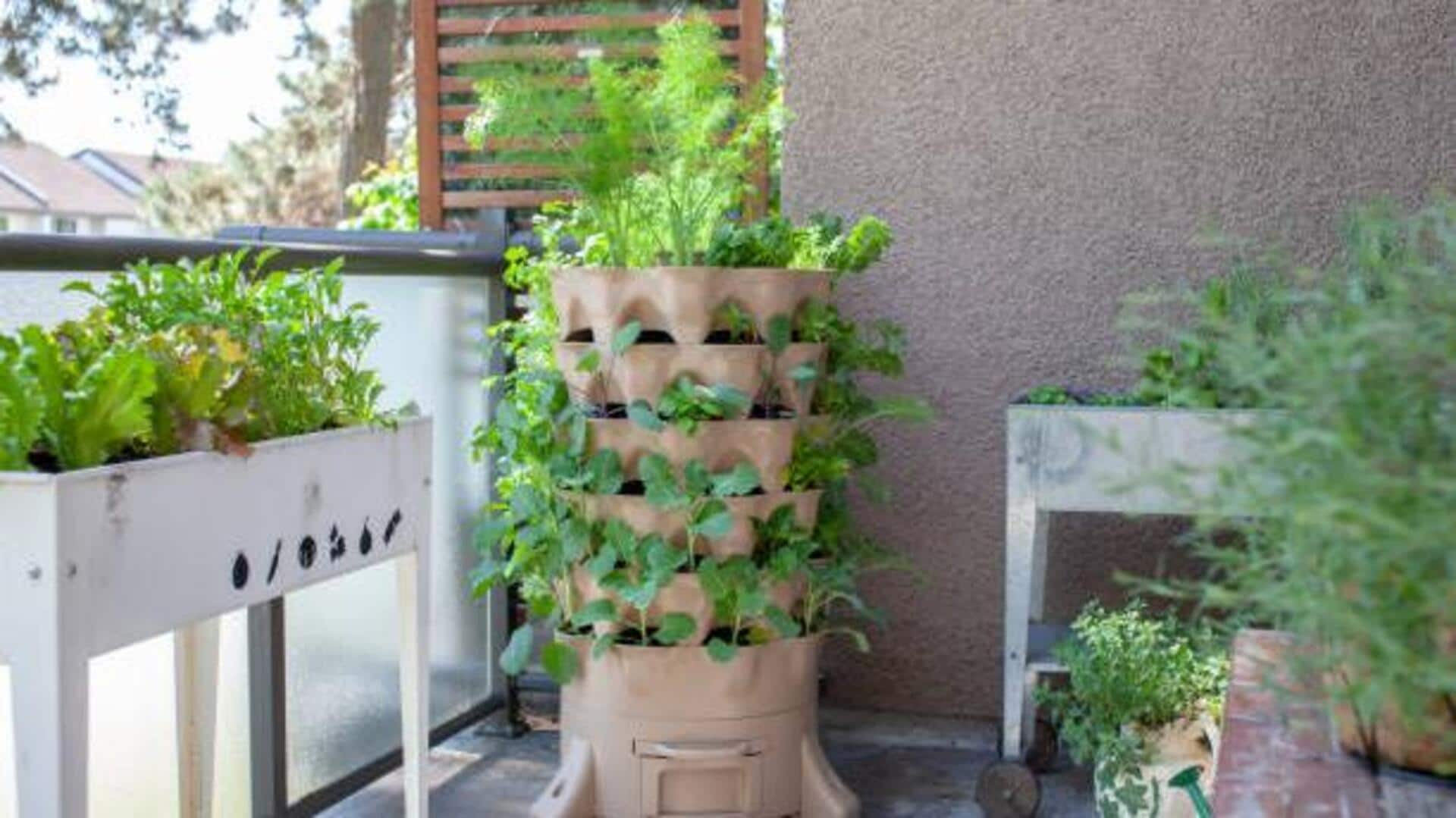
How to grow a vertical herb garden
What's the story
Vertical gardening is a smart way to grow herbs indoors, especially when space is limited. By stacking plants vertically, you can maximize your space and create a green oasis at home. This method not only saves space but also makes it easier to manage your indoor garden. With the right setup, you can enjoy fresh herbs all year round without needing much room or resources.
Herb selection
Choosing the right herbs
Selecting the right herbs is key to a successful vertical garden. Some herbs like basil, mint, and parsley grow well in vertical setups. They are hardy and adapt easily to different conditions. Consider the light requirements and growth patterns of each herb before planting them together. This way, you can ensure that all plants get enough light and nutrients.
Garden design
Designing your vertical garden
Designing your vertical garden requires creativity and planning. You can use wall-mounted planters, hanging pots, or even repurpose old pallets for this purpose. Make sure that your design allows easy access for watering and harvesting. Also, ensure that it provides adequate drainage to prevent waterlogging.
Care tips
Maintaining optimal conditions
Maintaining optimal conditions is key to thriving herbs in a vertical garden. Provide adequate light by placing your garden near windows or using grow lights if necessary. Keep soil moisture consistent by checking regularly but avoiding overwatering. Fertilize every few weeks with a balanced organic fertilizer to promote healthy growth.
Problem-solving
Troubleshooting common issues
Like any gardening, vertical herb gardening comes with its own set of challenges. Common problems include pests like aphids or spider mites, which can be controlled with natural remedies like neem oil sprays or insecticidal soap solutions. Yellowing leaves may indicate nutrient deficiencies or overwatering; adjust care accordingly by checking soil moisture levels before watering again.